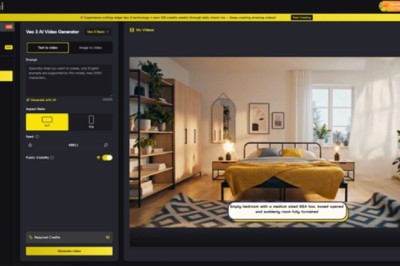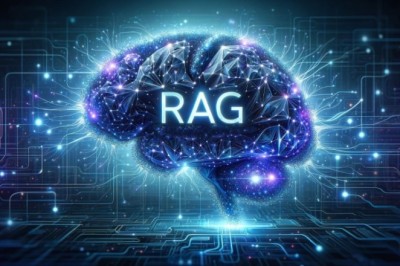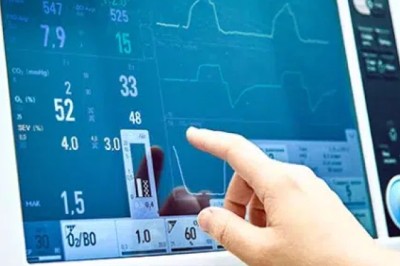views
Photo by Malte Helmhold on Unsplash
Did you know that 4.4 million new blog posts are published every day across all platforms? For every content marketer, this means one thing: it’s a cut-throat, fierce battle for eyeballs out there. That’s why most of them leave no stone unturned when it comes to making their content stand out, including taking their SEO game up a notch.
While SEO goes hand-in-hand with keywords, structures, and metadata, not all of us realize that it’s also about the visual added to the article itself. Yes. Visual content can be a powerful SEO tool. Done right, they’re not only effective in making articles or pages much easier on the eyes but also improve your website’s rank on the SERPs.
Visual content we’re talking about here includes:
- Images (featured images, charts, screenshots, etc.)
- Videos
- Infographics
But, how can they exactly help you to be on your way sitting on the top pages of SERPs? Let’s dive in!
#1. Visual Content Increases Dwell Time
Websites with more images receive 94% more page views than those without any images at all. It’s a fact that visuals are more engaging and keep visitors on your website longer.
For example, you create an in-depth blog post about a video marketing checklist. Rather than making your visitors read the whole text, you can create one simple infographic that sums up the whole items.
This is especially helpful when it comes to long-form articles as they help break up the text, making it easier on the eyes. Not only do they keep people around longer, but they’re also more likely to return.
When a visitor stays on a page longer, it means you have an increased dwell time and a reduced bounce rate. This translates to better SEO ranking as Google takes into account how long someone spends on your website. The longer they stay, the more likely you are to be considered a quality result.
#2. Visual Content Gets More Shares
Visual content is 40 times more likely to be shared on social media than other types of content. When it comes to promoting your content, images and videos are the way to go. They’re more eye-catching and tend to elicit a higher emotional response than text alone.
This increased sharing means that you’ll not only get more visitors to your website but also increase your brand’s reach. The more people who see your content, the higher the chances of them converting into customers. More importantly, search engines will see this increased activity and rank you higher as a result.
#3. Visual Content Generates More Backlinks
Backlinks are still one of the top factors that influence your SEO ranking. And, it’s no secret that visual content is more likely to get links than plain text. In fact, infographics get republished up to three times more often than any other type of content.
This means that you not only have better chances of getting links but also of getting high-quality links. If other authoritative websites find your visual content worth citing, they will link back to your piece. The more links you have, the higher your website will rank on SERPs. Not only that, but you’ll also get referral traffic from these websites. Not to mention, the increased exposure and brand awareness that comes with it.
#4. Visual Content Helps You Rank for Long-Tail Keywords
Long-tail keywords are those that are more specific and less competitive. They usually have a higher conversion rate than short-tail keywords. And, you guessed it – visual content is perfect for targeting them.
Since long-tail keywords are usually less popular, there’s a good chance that your competitors aren’t using visuals to target them. This means that you have a better chance of ranking higher than them. You can also create more specific and targeted content using long-tail keywords.
#5. Visual Content Conveys Messages Efficiently
Search engines like Google love it when a website gives its audiences exactly what they’re looking for. That’s the website they’ll prioritize as it appears more authoritative and trustworthy. In this case, visual content is perfect for doing this as it conveys messages more efficiently than text alone. In fact, 65% of people are visual learners.
This means that they learn best when information is presented in a graphical format. By using visuals in your content, you’re catering to the majority of your audience and making it easier for them. So, by using visuals, you can communicate your message more clearly and effectively. Not only that, but you also have a higher chance of getting people to take action.
Wrapping Up
When it comes to SEO, visual content is a powerful tool that you can’t afford to ignore. By using images, videos, and infographics in your content, you can improve your ranking, get more shares, and generate more backlinks. All of them will contribute to increasing your website’s visibility and helping you reach your target audience. One thing to remember here is that quality always trumps quantity. So, make sure that your visuals are well-made and relevant to your audience.
Author
Andre Oentoro is the founder of Breadnbeyond, an award-winning explainer video production. He helps businesses increase conversion rates, close more sales, and get positive ROI from explainer videos (in that order).





















Comments
0 comment